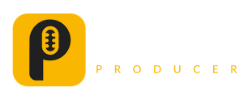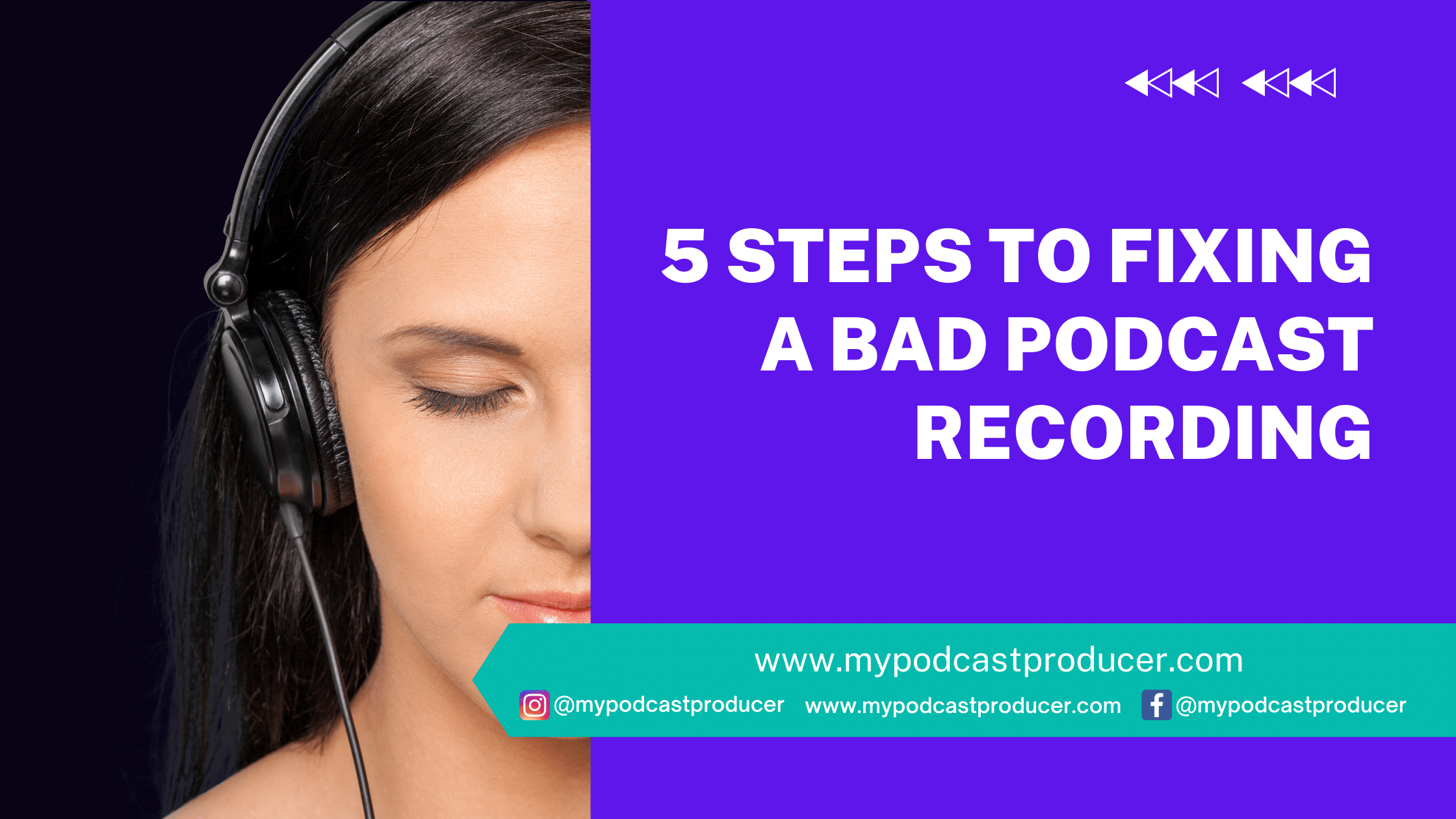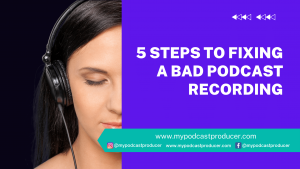Having a great podcast recording setup is as important as creating compelling content. As you know and by convention, fixing a bad podcast recording is done after the mid-production phase.
The boom of editing software and the frequency at which talks of better podcast editing practices and tools dominate online hubs reveals the importance attached to editing for optimal podcast production.
Today, there are tons of universal editing tools – for sure you know a few-, techniques, and work systems that you as a podcaster can leverage to step up your game. There are also a lot of tested podcasting tips that can help you skip trial-and-error in your podcast recording.
Yet, as you might have guessed, there are some disparities as to what fixing or editing a podcast recording constitutes. Before we move on to fixing bad recordings as a podcaster, it is important to note that there are 3 important phases of podcast production.
- Pre-production phase: this is the phase where all preparation of the podcast content, setup, and configuration is done. This is where the major fixing should be carried out.
- Mid-production phase: this phase basically consists of recording the podcast and taking notes as the show runs.
- Post-production phase: this is the final phase where all things mastery comes in. From editing, mixing and down to mastering, all of these are done in this phase. I also call it the polish-phase or the enhancement phase.
While beginner podcasters think that fixing a bad podcast recording is a major goal in podcasting, the top podcasters understand that preventing bad recording is more important. A typical saying that applies to this is “Garbage-In, Garbage-Out.”
Hence, the goal in terms of podcast quality is to fix the recording setup and process before actually recording the podcast. Let the post-production phase be used for “quality enhancement rather than fixing.”
We understand how much your podcast means to you, how much value you place on retaining your audience, and how bad you’d love to enlarge your podcasting coast. We also understand the role good audio quality plays in the success of your podcast. This is why we bring you these 5 magic steps to fix your podcast recording and to up your podcasting game.
STEP 1 TO FIXING A BAD PODCAST RECORDING – “Plan and Get Organized First”
The need to plan before getting behind the mic cannot be overemphasized. Recording great audio takes some practice. Understand that decisions made in the pre-production stage of your podcast can simplify or complicate your editing process in the post-production phase.
As such, you need to research and plan. Let your script guide you but don’t be a script rendering robot. Instead, go with the flow and use your script as a beacon and guide. Decide what and why you are editing at the initial stages of your recording. Make sure you know what you’re trying to achieve from the outset.
When it comes to organization, the bar is never too high. Adopting a high level of organization will make your podcasting life much simpler.
Always use conventional folder structure and filename conventions. Use dedicated tracks in your Digital Audio Workstations (DAWs) for different types of audio (voiceovers, dialogue, field recordings, sound effects, music, and ads), group them accordingly, and always remember to separate content editing sound editing tasks.
STEP 2 TO FIXING A BAD PODCAST RECORDING – “Use the Right Equipment/Software, and Understand How to Use Them”
Using the right equipment is highly underrated by beginners. Now, the right equipment is not the most expensive equipment or software on the shelf but the one that is capable of helping you produce a decent podcast show.
In our next post, we will be sharing a complete podcasting setup for a decent podcasting. That is a complex topic not to be added here.
You need to use the right equipment. For optimal recording, you’ll need a microphone that isn’t built into your cell phone or laptop, a pop filter, and a quiet place to record.
Also, you need to adopt an editing style that works for you. When it comes to styles of editing, you’ve got two options: destructive and non-destructive.
For non-destructive editing, the changes you make to a file don’t affect or reflect in the source file. With this editing style, you could experiment with changes and samples as the raw file remains intact.
With the destructive editing style, you alter a raw file when you make changes to a file. Here, what is done is done. With this style, editing is more precise and the possibility of mixing things up is reduced to a minimum.
Your decision to opt for either style when working with your preferred Digital Audio Workstation should depend on the ultimate goal of your editing.
However, we at mypodcastproducer always recommend a non destructive editing style.
STEP 3 TO FIXING A BAD PODCAST RECORDING – “Control Your Recording Environment”
More often than not, where you record is what you record. Finding a quiet place to record is not enough. What you need is a space with lots of soft furniture to absorb the sound.
Also, you need to adopt proper microphone techniques. Ensure your guest’s microphone has a strong signal. Stay quiet when your guest speaks. Watch your breath and your volume levels. Increase the gain of the lower-level speaker before you begin editing.
Try as much as possible to make sure that your recording isn’t ruined by underlying mechanical and electrical noises.
STEP 4 TO FIXING A BAD PODCAST RECORDING – “Trim and Cut Mercilessly”
At this stage, you want to edit out any tangents. You should have decided the length of your podcast beforehand. 20 to 30 minutes is a good length for your podcast.
If a part of your content doesn’t add value, cut it. Aim for a smooth, cohesive listening experience that flows naturally. Don’t overanalyze and over-edit your podcast interview. People are humans so let them sound like it. Don’t tamper with the natural flow of speech while you’re removing background noises, sibilance, plosive pops, awkward pauses, stutters, and even pointless repetitions.
Further, take note of things to edit using timestamps. Listen to your podcast interview more than once before editing to prevent mishaps and extra work.
STEP 5 TO FIXING A BAD PODCAST RECORDING – “Hire a Podcast Editor”
Podcasting is a lot of work. Add quality editing to the equation and you have something close to a Herculean task. The fear of having to edit is one of the main reasons a lot of people are still backing out of being podcasters.
This is where a professional podcast editor comes in. A professional podcast editor is the greatest asset you as a podcaster could have. Apart from helping you with mixing, mastering, syndication, and promotion, a podcast editor helps you balance your philosophy with modern editing techniques.
A podcast editor relieves you of the stress and the rigors of podcast editing. When you hire a podcast editor, you would be able to focus on creating quality content alone. Just do the recording and let someone else worry about the editing.
In “Conclusion” to Fixing A Bad Podcast Recording
Fixing and editing a bad podcast recording has a lot to do with the “you” factor. Even if you decide to hire a podcast editor, he or she dances to your tune. While bringing in novel ideas, your podcast editor aligns with your philosophy of what stays and what gets cut.
Another huge factor is your audience. Invest in understanding them and their relationship with your podcast. The yearnings and the nature of your audience is also another major factor that influences your editing.
So, plan! Have a game plan for every podcast recording. Place a premium on being organized. It would do your podcasting a lot of good. Be the master of your recording environment and don’t trade quality and value first for artistic effects.
If editing is too much of an extra job, hire a podcaster editor.
Emmanuel is the Founder & Chief Editor at MYPODCASTPRODUCER. At MYPODCASTPRODUCER, we believe editing should be personal. That’s why we begin every podcaster’s relationship with a conversation. We want to know how you want your podcast to feel, your objectives, and how we can best help you achieve them.
To learn more about Emmanuel and how we help podcasters achieve great audio quality, visit www.mypodcastproducer.com.



